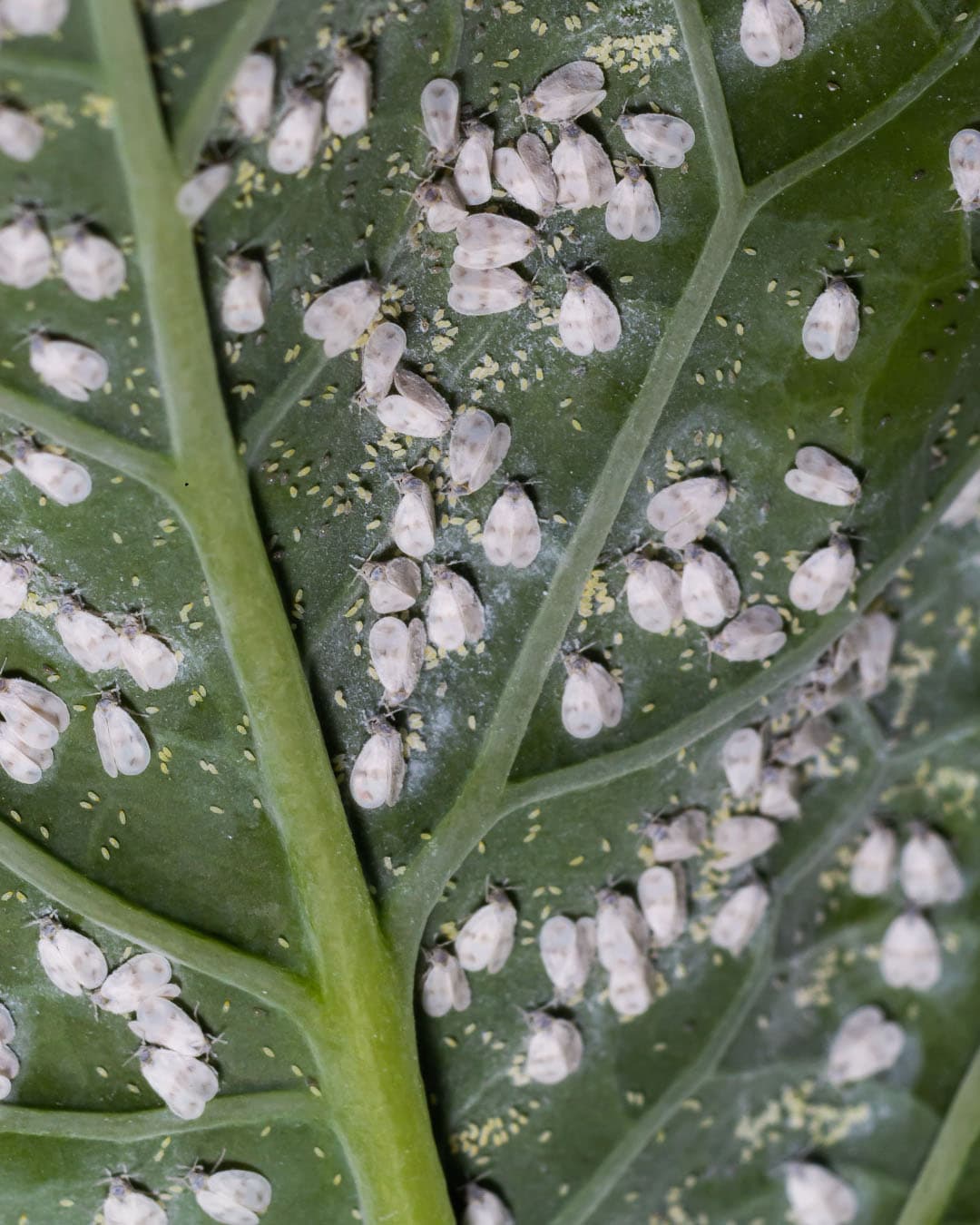Whitefly Facts & Information
Whiteflies, small, winged insects that feed on plant sap, can cause significant damage to a variety of plants and crops. Known for their rapid reproduction and ability to transmit plant diseases, whiteflies are a major concern for gardeners and farmers alike.

Aleyrodidae
What You Need To Know About Whiteflies
What do whiteflies look like?
Whiteflies are small, winged insects typically measuring about 1/16 inch in length. They have pale yellow bodies and are covered with a powdery white wax, which gives them their name. Their wings are white and held tent-like over their bodies when at rest.
What do whiteflies eat?
Whiteflies feed on the sap of plants by piercing the leaves with their needle-like mouthparts. They primarily target a wide variety of host plants, including vegetables, ornamental plants, and houseplants. They excrete a sugary substance called honeydew, which can lead to the growth of sooty mold on the plants.
What sort of habitat do whiteflies live in?
Whiteflies thrive in warm, humid environments and are commonly found in greenhouses, gardens, and agricultural fields. They prefer the undersides of leaves, where they lay their eggs and feed on plant sap.
How do whiteflies commonly behave?
Whiteflies are highly active and can reproduce quickly, leading to large infestations. They are typically found in groups and are easily disturbed, flying off the plant when approached. Their feeding can weaken plants, causing yellowing, wilting, and stunted growth.
Did you know this about whiteflies?
Whiteflies are notorious agricultural pests and can transmit plant diseases, including various viruses that affect crops. Their rapid reproduction and ability to develop resistance to pesticides make them challenging to control. Interestingly, the sticky honeydew they produce can attract ants, which in turn protect whiteflies from natural predators. Integrated pest management strategies, including the use of natural predators like ladybugs and parasitic wasps, can be effective in controlling whitefly populations and minimizing their impact on crops and gardens.
Understanding Whitefly Infestations
Understanding whitefly infestations is crucial for effective management. Whiteflies thrive in warm, humid environments and are commonly found on the undersides of leaves. They excrete honeydew, which can lead to sooty mold growth and further weaken plants. Infestations can lead to yellowing leaves, stunted growth, and in severe cases, plant death.

How Hearts Handles Whitefly Treatment
Hearts Pest Management employs an integrated pest management approach to handle whitefly infestations. Our process begins with a thorough inspection to identify affected plants, assess the extent of the infestation, and locate potential sources of whiteflies. We then develop a customized treatment plan that may include cultural practices, biological controls, and targeted insecticide applications, ensuring the health and vitality of your garden or crops.
Whitefly Inspection
Whitefly Treatment
Whitefly Prevention
Educational Resources

Think You Might Have a Whitefly Infestation?
At Hearts Pest Control, we understand the challenges associated with Whitefly infestations and are here to provide professional solutions tailored to your needs. Flourishing in warm and humid climates, they are prevalent in many regions, including San Diego County, Orange County, and Los Angeles County.